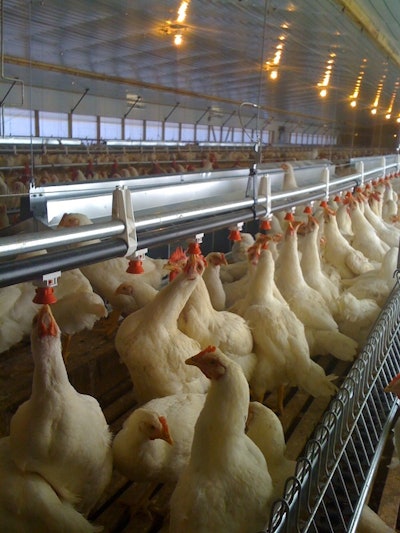
If chemicals you are using to clean and sanitize your watering system also break down the outer chromium oxide layer of the stainless steel drinker parts, thereby exposing these parts to corrosion, how will you know? You can’t see the parts inside. And how can you prevent it from ever happening in the first place?
To see if corrosion is a problem for your watering system, the first thing to do is check for leaking drinkers. You can do this by winching the system up to eye level and blowing the water off the trigger pins of 30 consecutive drinkers. Then watch for 30 seconds and see if any drops of water fall off the trigger pins. If that indeed happens, replace these leaking drinkers with new drinkers. Take the leaky ones and disassemble them on a clean surface. First, look for any debris in the seat and ball area — any foreign material that would prevent the seat and ball from fully contacting each other. Next, check for biofilm or glucose build up. Simply press the ball against the tabletop with your thumb and lift off the table. If ball hangs or sticks to your thumb for more than a second a thorough cleaning of the watering system is in order.
If you do not find debris or evidence of biofilm and/or glucose material, then the next step is to inspect the drinkers for corrosion. To prevent damage, only use drinker line cleaners that will remove biofilm and glucose but not the all-important oxide layer that protects stainless steel from corrosion. This is the reason we recommend hydrogen peroxide based products — very effective at cleaning without compromising stainless steel components, even in high concentrations, which is not the case when using chlorine and acidifiers.
Read more to learn how to detect and prevent drinker corrosion.
















